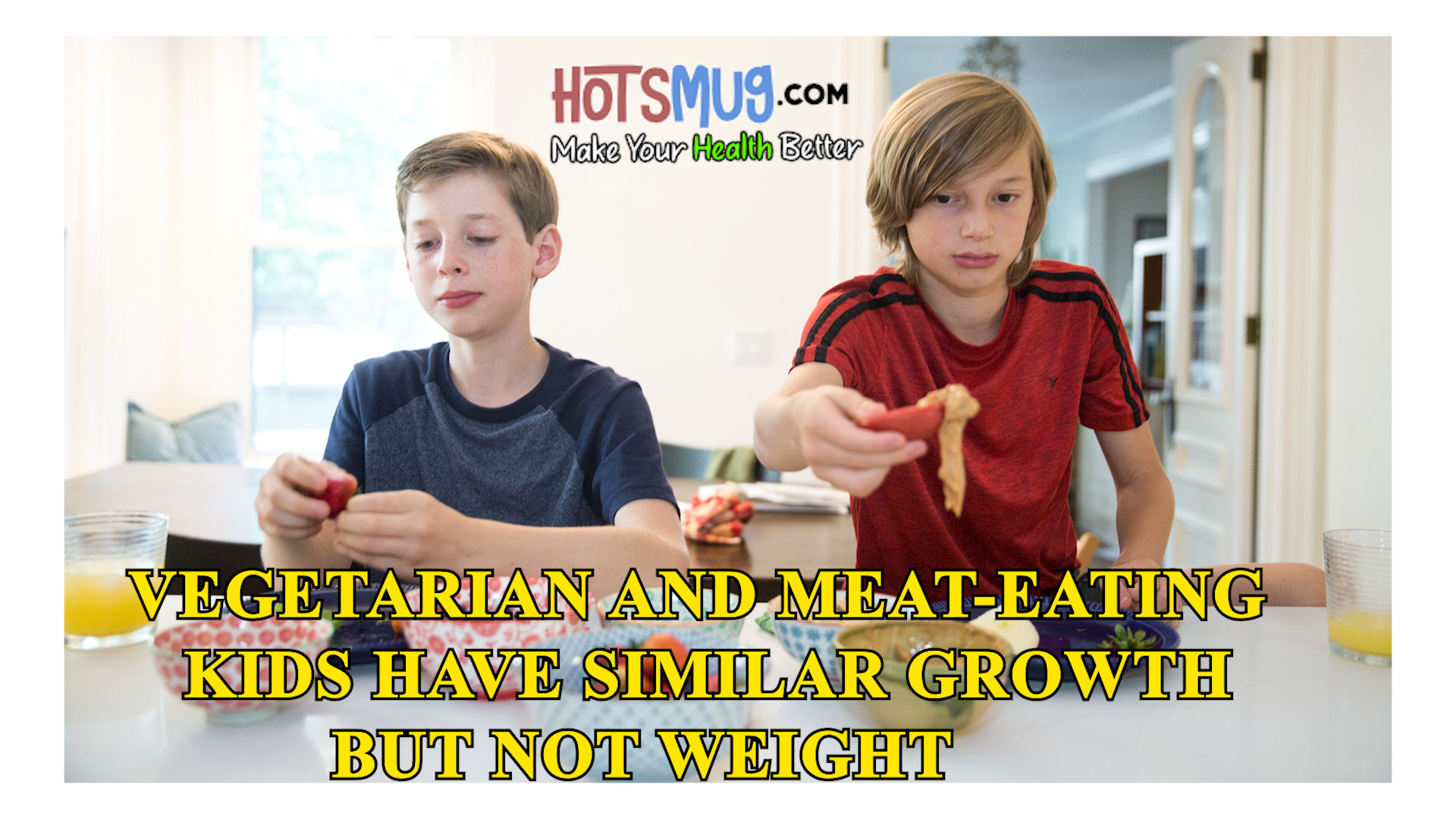Children eating a vegetarian diet and children who ate meat were similar in terms of growth, height and nutritional measures, but vegetarian children had higher odds of being underweight, according to a study published Monday in the journal Pediatrics.
Plant-based diets became very popular in last decade but here is no research into the nutritional outcomes of children following vegetarian diets.
The authors used data from nearly 9,000 children who were between 6 months and 8 years old and had participated in the TARGet Kids! Cohort between 2008 and 2019.
248 children (including 25 vegans) were vegetarian, and 338 more children had become vegetarian sometime later during the study. However, vegetarian children were nearly twice as likely to be underweight than non-vegetarian children.
- New research has found that children consuming a vegetarian diet had similar growth patterns and nutritional measures to children who ate meat, but they were more likely to be underweight.
- They also found children who consumed cow’s milk had higher cholesterol levels than children who didn’t.
- Health experts say the meaning of vegetarian diets can vary widely between people. Therefore, not all vegetarian diets are the same.
- Since being underweight is associated with undernutrition, the study authors concluded the need for special care when planning the diets of vegetarian children.
Vegetarian diets are not one-size-fits-all
While the study gives insight into potential differences between health measures in children who follow vegetarian diets and those who do not, it doesn’t tell parents much about the actual dietary differences between vegetarians.
“A vegetarian diet can mean different things to different people. For example, vegetarianism does not necessarily mean vegetable-forward or well-balanced, and I think that’s really key to the health of children,” says Dr. Amy Sapola, who is a doctor of pharmacy and has a bachelor’s degree in nutrition.
She is also a certified wellness coach by the Institute for Functional Medicine Certified Practitioner and has also completed a two-year fellowship with honors in Integrative Medicine from the Academy of Integrative Health and Medicine.
Sapola says she has worked with many patients and clients who describe themselves as vegetarian but have had drastically different ways of eating.
“I can recall a patient I worked with who described herself as vegetarian because she did not consume meat, but she also shared that she did not like vegetables,” she says.
Dr. Amrik Singh Khalsa, a pediatrician at Nationwide Children’s Hospital, says it’s reassuring to see that children with vegetarian diets did not have any significant differences in growth or nutrition scores.
“Oftentimes, people assume that those with vegetarian diets may be missing out on certain micronutrients. Of note, there is a wide variation in vegetarian diets and it would be important to carry out a study that looks at the dietary patterns more closely,” he tells Healthline.
Cholesterol and children: What you need to know
While the study indicated children who consume cow’s milk may have higher levels of cholesterol in their blood than children who don’t, Sapola says this isn’t something to stress over.
“Cholesterol is essential to building healthy cells and is used by the body to produce hormones. In the absence of high levels of inflammation, cholesterol can be very beneficial to normal growth and development,” she explains.
“So if a child is eating a well-balanced diet low in processed foods and added sugar, I would not be concerned. However, if the cholesterol level was very high, this could be a sign of familial hypercholesterolemia, which is very rare, but would warrant further evaluation and potential treatment,” she adds.
Tips for parents of vegetarian children
The most important factor for children’s nutrition is variety, say experts. Here’s how they suggest parents can help kids add more variety to the vegetarian diet.
Try different tastes, textures, and colors
Sapola says she always recommends that when children start eating solid foods, they are introduced to a variety of different vegetables with different tastes, textures, and colors.
“Ensure that there is variety in the diet, including many different colors of vegetables, beans, nuts, and pasture-raised eggs,” she says.
To help with meal planning, she says to think of the six tastes (sweet, salty, sour, spicy, pungent, astringent) and incorporate foods in each meal to represent each of the tastes.
Khalsa suggests feeding by the colors of the rainbow.
“The key in planning a vegetarian diet is to ensure that there is a good variety, ensuring that you have fruits, vegetables, lentils, and legumes of various colors – the colors of the rainbow,” he says. “This will help children get the right balance of nutrients and micronutrients and prevent any macro or micronutrient deficiencies.”
Give children choices
“Allow children to choose what and how much goes on their plate,” says Sapola.
“This can be challenging for parents, but this can be as simple as deconstructing dinner, serving the ingredients separately and allowing children to assemble their own plate,” she added.
Boost nutrition with fresh foods
“Buy and prepare fresh foods to maintain the nutrient content,” says Sapola. This means avoiding over-boiling vegetables in favor of sauteing, baking, or lightly steaming.
You may also try adding olive oil to vegetables to help increase absorption of fat-soluble vitamins (A, D, E, K), she says.




